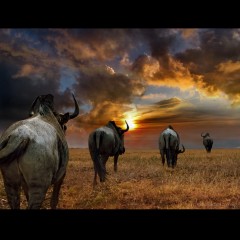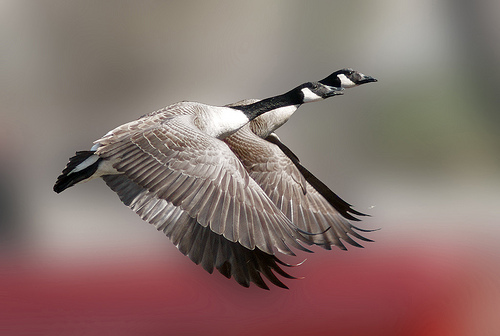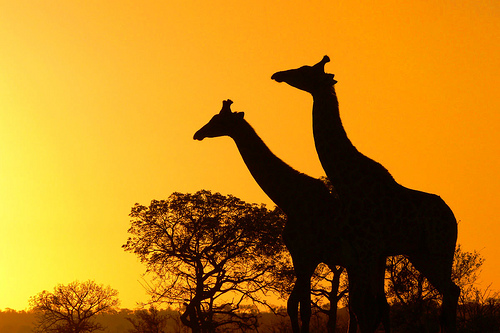
The natural beauty surrounding us in the form of landscapes, plants, and wildlife form compelling subjects to capture in still images. Amongst all, wildlife photography can be a lot of fun, adventurous yet challenging. Photographing the flora and fauna in their natural form and diversity introduces an element of variety in your photographs. Framing the birds and animals in their free zones (the naturally appealing composition) — national parks, sanctuaries and forests, give ample of opportunities to capture unique and interesting photographs. Here are some tips for shooting the wildlife, out there in the wild.
-
Requirements For Wildlife Photography
Wildlife photography is nothing less than any excursion trip; where you discover innumerable secrets of nature. The flora, fauna and forest trees; all welcome you for giving some beautiful and rare poses. Just pack your bags and plan well for the adventurous outing. Be prepared with all the necessary equipment and accessories required for the shooting trip. Amongst all you will need some spare batteries, tripod, choice of lens, remote trigger, a laptop, extra memory card(s), etc. If possible, carry an extra camera as well.
-
Technique — Make The Best Of Wildlife Photography
Wildlife photography is all about knowing your subject well and capturing them at the right time. Keep in mind the following:
- Patience: It’s rather a prerequisite than a technique. Wildlife has its own rules, animals don’t pose and the wild is uncontrolled and yes, “wild”. All you can practice is patience and perseverance.
- Remote Trigger: A remote trigger comes in handy when you want to stay safe from dangerous subjects or have to leave them alone by themselves. Remote trigger is an essential in wildlife photography as it allows you to shoot from a distance. The only problem it poses is that you cannot compose your shot in real-time.
- Lens: Telephoto lenses allow you to focus on distant subjects. Zoom lenses serve multiple purposes and come in handy when you have to zoom in/out to recompose the shot. Also keep a wide-angle handy just in case you come across a beautiful landscape.
- Circle of Fear: Everyone has a comfort-zone. The circle-of-fear is analogous to this. Like us animals have their own boundaries, if you get too close to them, they may either be scared away or if you are unlucky attack you.
- Magic Light: Magic light adds warmth, contrast and shadows to the subject. You can use the magic light to get creative effects in your photographs too. And it’s not only the animals that you can shoot, wildlife offers you beautiful landscapes too which are best captured in magic light.
- Focus: Set your camera to focus in continuous modes to account for motion and movement of the subject.
- Fast Shutter Speed: Certain animals are more active than others. If you come across any of these, you will want to switch to shutter-priority mode or sports mode to freeze these subjects. Light shouldn’t be a problem if you are in a well exposed area.
- Perspective: This needs some preparation and luck. Changing your angle while you are taking photograph, may disturb your subject. Check your view point, have backup plans and if you can you can place more than one camera to take shots from multiple angles.
- Camera Settings: Effects like DOF, motion, etc. are best controlled through the camera settings. Others like colors, saturation, tonality etc. can be taken care of during post-processing too.
- Shoot RAW: Its always recommended to take the photograph in RAW format. This allows greater flexibility and scope for retouching, alteration during the post-production phase. JPEGs are lossy and don’t have similar scope for editing and retouching, and you can’t/don’t want to go all the way back for a second take. If you are running short of camera memory then you may want to turn this option off since RAW images populate the memory faster.
- Continuous Shots: Capturing animal movement and expression is very tricky. Keep firing your shutter and take multiple shots, there are greater chances that you may get lucky. Set your DSLR to shoot in continuous mode. If you are running short of camera memory then you may want to turn this option off since multiple shots of the same scene populate the memory faster.
- Blinds & Hideouts: You can use blinds and hideouts effectively to achieve proximity to your subjects. But this can be risky at times and it would be safe to avoid getting close to dangerous subjects.
-
Precaution: Be Wary Of Wildlife
Out there in the wild, nature can be unpredictable. Practice precaution in unexplored territory or with wild subjects. be extra careful; do not disturb them. Maintain appropriate distance and avoid intrusion in their territory. Let them be all by themselves.
Explore the wild and get creative. Feel free to share your Flickr photographs in the comments.




http://www.indianaturewatch.net/displayimage.php?id=196642